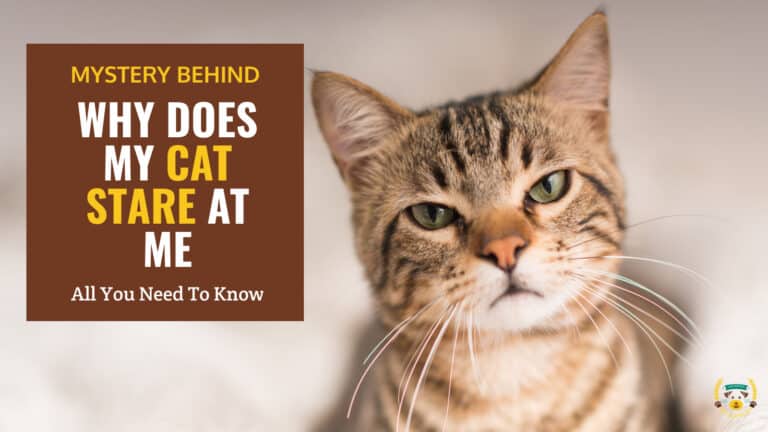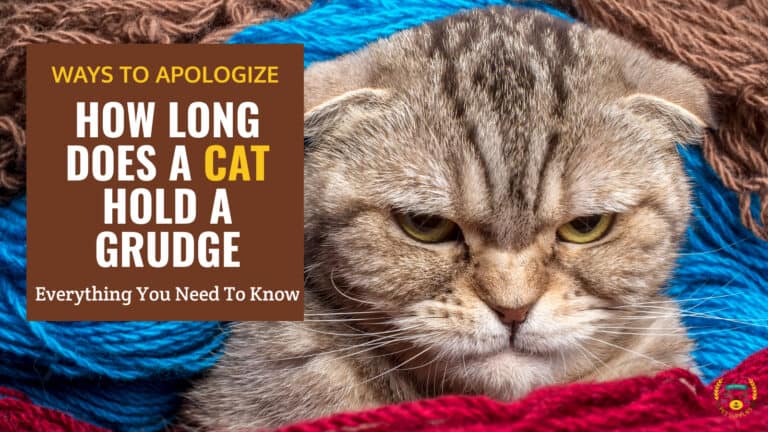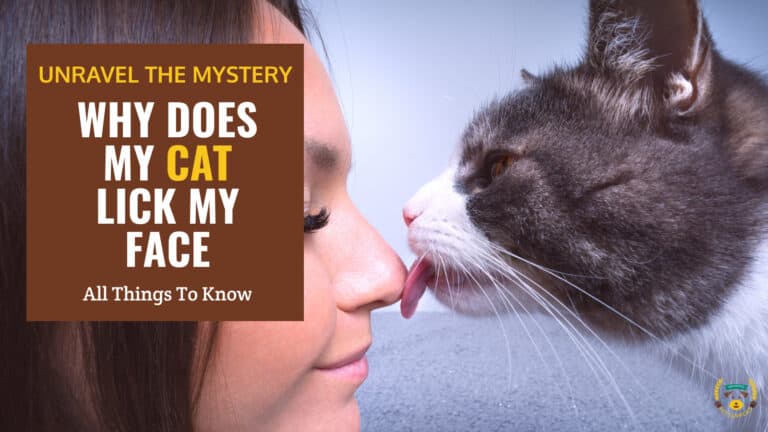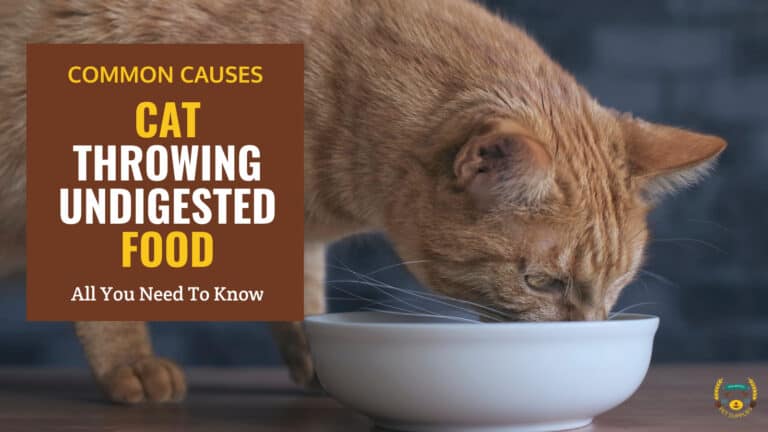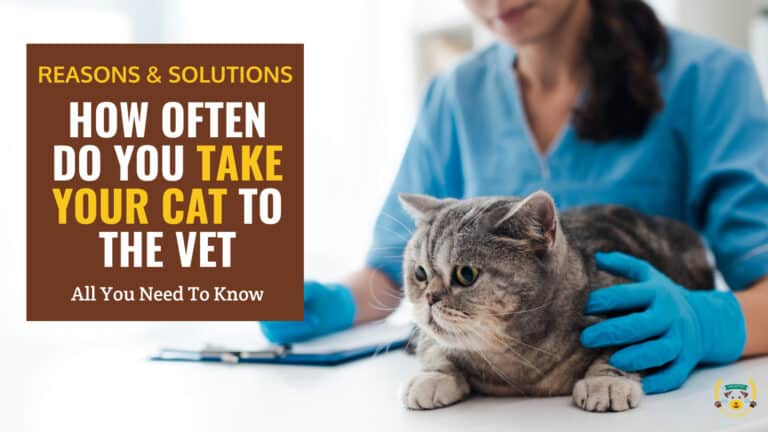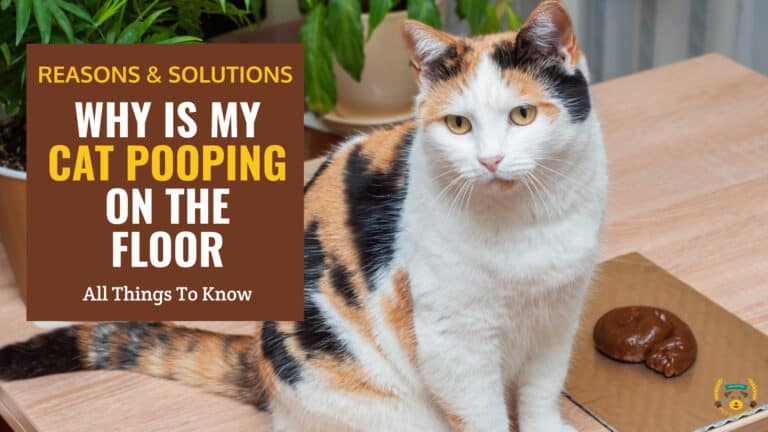10 Best Cat Breeds for Apartment | Reviews & Guide
Last updated: January 13, 2024
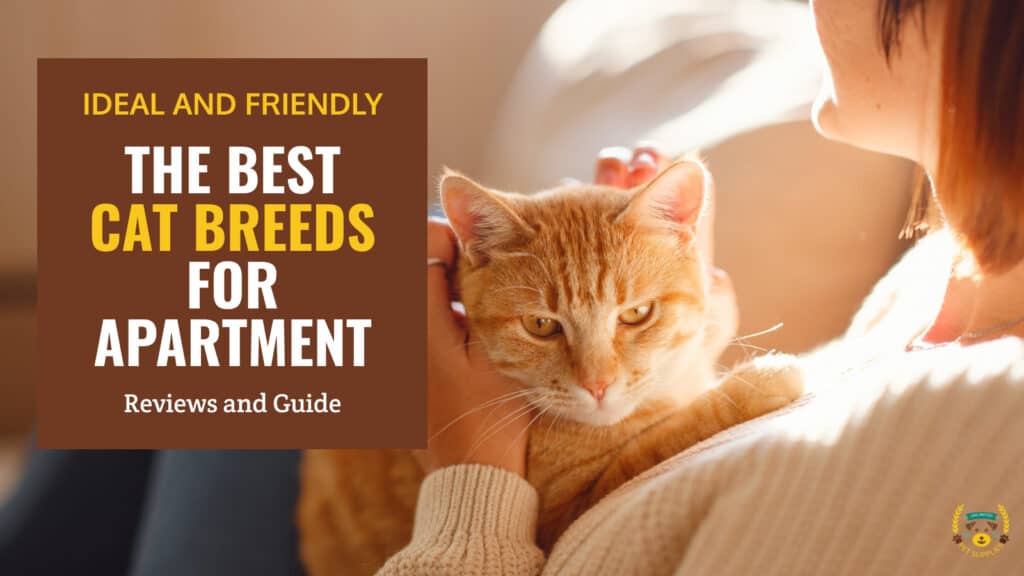
Summary
- Choose a cat breed that matches your apartment's size and your lifestyle.
- Consider personality, noise level, energy level, grooming needs, and litter box habits.
- Breeds like Persians, Birmans, Russian Blues, and Devon Rexes are good apartment options.
- Adopt from a responsible breeder or shelter, weighing cost and potential health risks.
Have you ever considered getting a cat but worried your apartment was too small? With their ability to curl up in the tiniest spots, cats can thrive in limited space, given the right breed.
However, not all cats are created equal when it comes to apartment living. The key is matching your feline to your lifestyle and environment. This guide will explore ideal cat breeds suited for apartment life based on factors like energy level, noise, and attention needs.
For instance, vocal Siamese cats may not work well in thin-walled apartments, but calm, mellow breeds could flourish with minimal space. Even less active cats require some exercise and interaction, though.
So while the size of your apartment is important, it's more about choosing a breed whose temperament and activity needs mesh with what you can provide. The goal is happy, healthy cats and owners.
Keep reading to discover the 10 most apartment-friendly felines that will have you and your furry friend purring.
-
1)
Our Top Recommendations for Apartment Cat Pets
- 1.1) Persian - $1300 - $5000
- 1.2) Maine Coon - $4000 – $6000
- 1.3) Birman - $400 to $3,000
- 1.4) Russian Blue - $500 - $2,500
- 1.5) Sphynx - $2000 - $3000
- 1.6) Burmese - $450 - $3,000
- 1.7) British Shorthair - $800 - $2,500
- 1.8) Devon Rex - $1,000 - $3,000
- 1.9) Ragdoll - $1,000 - $2,500
- 1.10) Himalayan - $1,210 to $6,489
- 2) How To Choose A Cat Breed For Your Apartment?
- 3) Final Thoughts
Our Top Recommendations for Apartment Cat Pets
The following are our top picks for cat breeds that you can adopt to live with you in an apartment. The common thing between these breeds is their docile temperament and their ability to adapt to living in smaller spaces.
Please note that we will provide an estimated cost of adopting each breed from a reputable breeder (which will ensure your cat is in good health). Adopting from shelters, online groups or human societies usually costs less, but you run the risk of getting a kitty with health issues.
Persian - $1300 - $5000
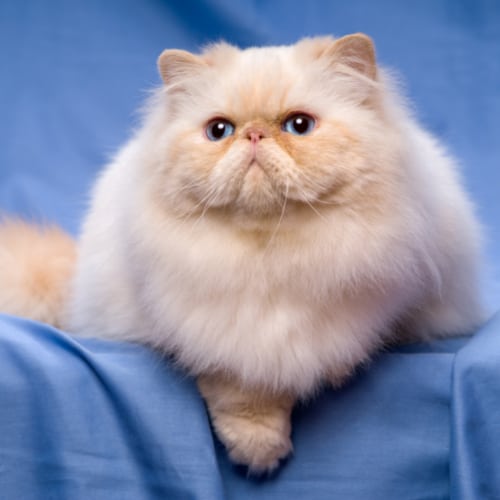
The Persian cat is one of the most globally recognized breeds, known for its long, flowing coat and sweet, docile temperament. Originating from the mountainous regions between Iran and Afghanistan, they were imported to Europe as exotic pets in the 17th century. Persians rose to popularity in the late 19th century as their glamorous coats were prized at early cat shows. Today, the Persian exemplifies a dilemma in breeding extremes - their peke faces may be cute but bring health issues like breathing difficulties.
While the show Persian pursues exaggerated features, the traditional variant maintains the original moderate head shape and high tail carriage. Either way, Persians tend to be calm, affectionate pets well-suited to apartment life given their low activity needs. Their long fur does require daily grooming to prevent matting and health problems. Responsible breeding to reduce kidney disease prevalence also remains a concern. Overall, Persians offer adaptable, laidback companionship in a fancy package.
For those desiring the Persian look in a lower-maintenance coat, the Exotic Shorthair combines the Persian’s cherubic face with a short, dense shorthair coat. Less grooming makes Exotics better suited to busy owners. Himalayans offer the pointed color pattern of a Siamese on a Persian body. Whether longhair or shorthair, traditional or peke-face, Persian-type cats can thrive in apartments with proper care. Their sweet personalities have captivated fanciers globally for over a century.
Maine Coon - $4000 – $6000
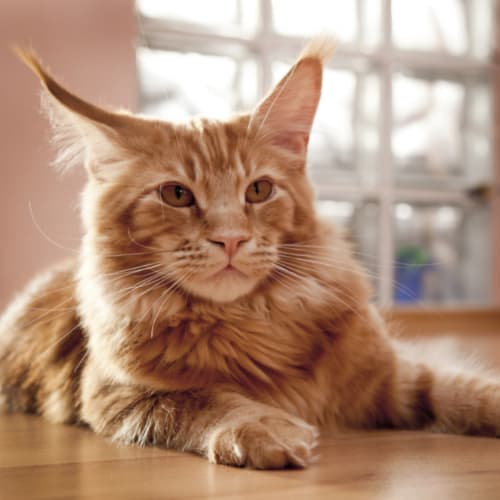
The Maine Coon stands apart as one of the largest domesticated cat breeds, yet their gentle giants make loving, playful pets well-suited to apartment living. Hailing from the rugged northeast United States, their water-resistant coats and muscular build allowed them to thrive as working cats on farms and ships. Today, the Maine Coon is celebrated for its intelligence, devotion to family, and kitten-like personality persisting into adulthood.
While their shaggy fur may suggest high maintenance, Maine Coons only require weekly brushing to prevent matting and keep their coat healthy. Their moderate activity needs also adapt well to indoor environments. With interactive play and vertical space to climb, Maine Coons can flourish in apartments. As one of the most popular pedigreed cats globally, Maine Coon breeders work diligently to screen for hereditary health conditions.
For those seeking a loyal, gentle giant bundle of affection, the Maine Coon delivers dog-like devotion in a cat's body. Their legendary patience and companionship make them ideal apartment pets, given proper exercise and grooming care. Prospective owners should ensure reputable breeders performing health checks on parent cats. With responsible breeding, the Maine Coon continues charming families worldwide with their super-sized purrs and antics.
Birman - $400 to $3,000
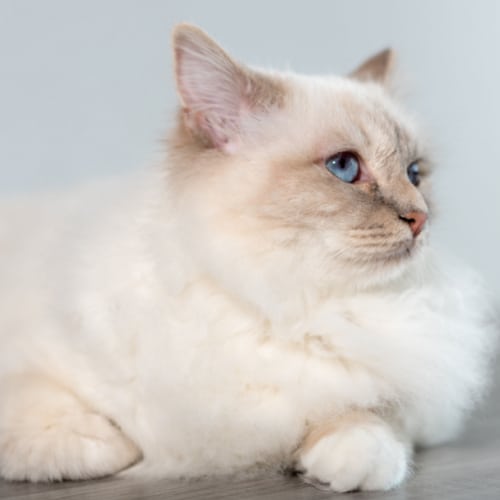
Striking colorpoint coats and mystical origins are Birman cats's distinctive features that captivate admirers worldwide. Also called the "Sacred Cat of Burma," tales claim Birmans were companions to temple priests in northern Burma. Their exact origins remain uncertain, but the first Birman imports to the West in the 1920s popularized the breed. Near-extinction during WWII compelled Birman breeders to outcross with Siamese and Persians.
In apartments, Birmans make devoted yet laidback companions. Their semi-longhair coats require weekly brushing to prevent matting. Early socialization ensures Birmans develop an outgoing personality befitting their mythical status. You should provide interactive play and vertical space to climb. Health concerns include heart disease and susceptibility to certain infections. Reputable breeders check for issues like hypertrophic cardiomyopathy.
With their striking coats and sapphire eyes, Birmans showcase good looks and grace. Their affectionate nature endears them to their owners. Birman breeders should remain vigilant about minimizing inbreeding and inherited illnesses. Overall, Birmans reward dedicated owners with steadfast companionship. Their refinement led to "chat sacré de Birmanie" - the sacred cat of Burma.
Russian Blue - $500 - $2,500
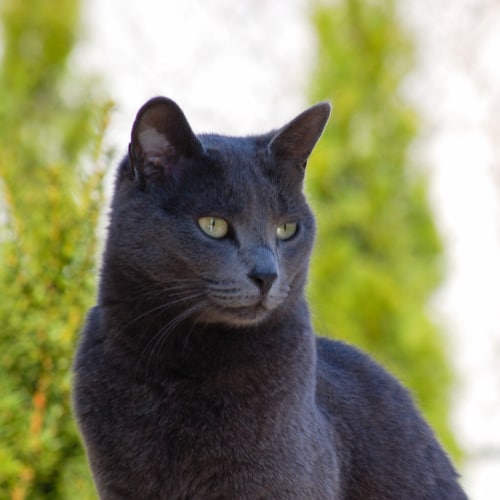
With their shimmering silver-blue coat and distinctly masked face, Russian Blues encapsulate feline elegance and grace. Despite their regal airs, Russians form deeply devoted bonds with their families, earning them a reputation as true "Velcro cats." Their inquisitive and playful nature belies their graceful exterior.
Weighing a moderate 7-12 pounds, Russians thrive in apartments, needing only daily play and affection from their loved ones. Their short, dense coat requires minimal grooming to stay lustrous. Russians also tend to be less allergenic than other breeds, producing less of the Fel D1 protein. Between their striking good looks and amenable personality, it's no wonder Russians have grown steadily popular over the last century.
While shy around strangers, Russians show their affectionate and charming nature once settled. They'll follow their chosen person from room to room, like a canine companion. With proper care and patience, Russians make exceptionally loving and loyal apartment cats. Ensure they have adequate vertical space and mental stimulation. Prospective owners should research breeders carefully to avoid hereditary health issues.
Sphynx - $2000 - $3000
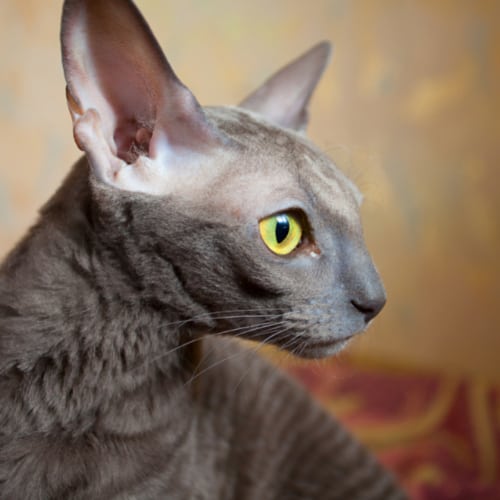
The Sphynx's naked appearance shocks some yet endears them to others. Behind their wrinkly bald bodies lies an energetic, affectionate spirit. Sphynx cats originated from natural genetic mutations causing hairlessness. Selective breeding of these cats starting in the 1960s led to today’s Sphynx breed. Despite their coat-free look, Sphynx are distinct from other hairless breeds like the Peterbald.
While low maintenance in terms of shedding, Sphynx require frequent bathing to remove skin oils. Their skin also needs protection from sunlight and winter temperatures. Potential owners should consider the grooming commitment Sphynx require. On the upside, their outgoing personality makes them highly sociable apartment cats. Sphynx crave constant human interaction and excel at entertaining families.
Health-wise, Sphynx are prone to issues like hypertrophic cardiomyopathy, respiratory infections, and congenital myasthenic syndrome. Reputable breeders screen for these conditions. Overall, the Sphynx’s uniqueness extends beyond its appearance - its affectionate spirit and energy captivate owners willing to provide diligent skin and health care. For the right household, Sphynx make delightful apartment companions.
Burmese - $450 - $3,000
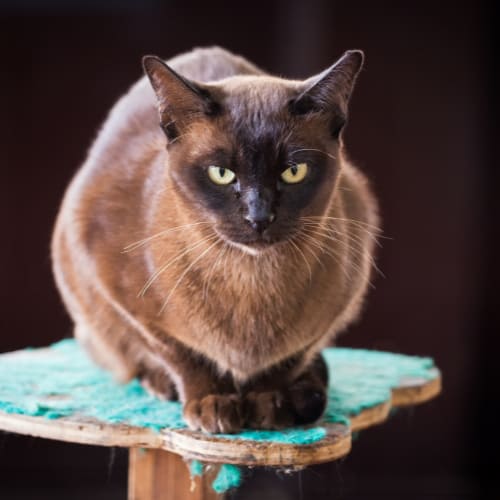
Burmese cats captivate with an extroverted yet endearing personality thanks to their distinctive brown coats and persistent vocalizations. Often described as "dog-like," Burmese crave constant human companionship and thrive when showered with playtime and attention. They formed as a breed in Southeast Asia, gaining popularity in the West by the mid-20th century.
Burmese make highly social, active apartment cats that require ample play and interaction to stay happy. Their athleticism and intelligence demand interactive toys and activities. Homes should also be prepared for their talkative nature. On the plus side, Burmese affectionately bond with their families. Owners should provide plenty of stimulation and company for these Velcro kitties.
While generally healthy, Burmese may face issues like hypokalemia and flat-chested kitten syndrome. That's why reputable breeders always screen parent cats. With proper care, training, and veterinary oversight, the engaging Burmese wins hearts with its lively, quirky antics. You should ensure they can meet the breed's substantial need for companionship and activity. Burmese reward dedicated owners with unwavering loyalty and devotion.
British Shorthair - $800 - $2,500
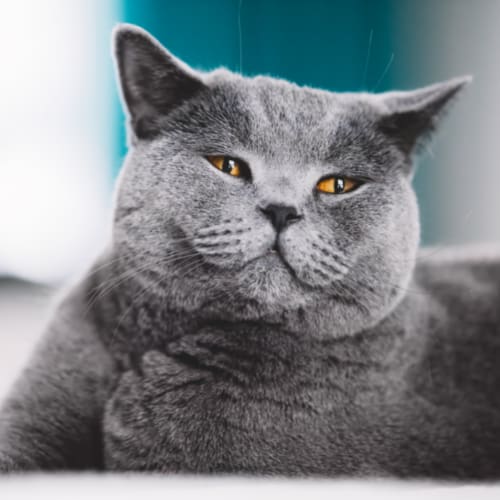
British Shorthairs epitomize the ideal lap cat with their round faces, cobby bodies, and laidback personalities. Originating as adept rodent hunters in Great Britain, they later became prized as show cats for their unique features. Despite near-extinction in the early 1900s, outcrossing revitalized the breed. Today, British Shorthairs rank among the most popular pedigreed cats.
In apartments, British Shorthairs make easygoing yet playful companions. They tend to be quiet, gentle, and tolerant - thriving in calmer households. Owners should provide interactive play given their hunting roots. Grooming needs are moderate with their plush coat. British Shorthairs remain relatively healthy but may face cardiac and kidney disorders. That's why reputable breeders screen parent cats.
Overall, British Shorthairs deliver steadfast loyalty and adaptability with minimal demands on owners. Their cute expressions and laidback charm have earned them global fans. With proper health and grooming care, British Shorthairs make delightful apartment pets. Their winning personalities explain their restoration from near disappearance to pedigreed prominence.
Devon Rex - $1,000 - $3,000
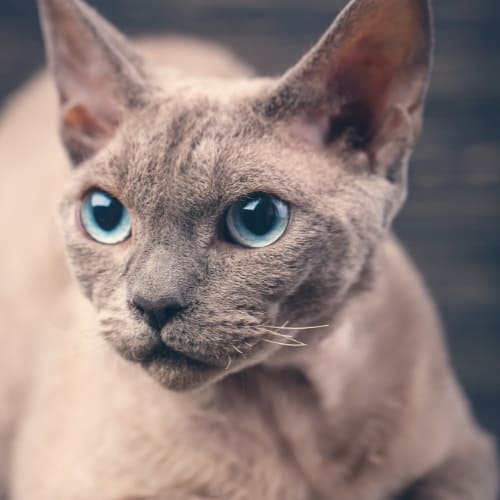
Devon Rex cats have tousled coats and monkey-like features and captivate with their playful antics and affectionate nature. Their curly coats originated from a genetic mutation in Devon, England in the 1960s. Unlike the Cornish Rex, Devons sport loose curls rather than tight waves. Their fur lacks the outer protective layer, requiring alternative means of warmth and sun protection.
Devon Rexes make active, mischievous apartment cats. Their high energy demands substantial playtime and cat trees for climbing. you need to limit time in direct sunlight and provide sweaters in cold weather. Devons thrive on human interaction and reciprocate with purring and cuddles. Their minimal shedding makes them less allergenic than other breeds.
Overall, Devon Rexes charm families with their clown-like personalities. However, their specialized care needs, from nutrition to grooming, mean they are better suited to experienced cat owners. Reputable breeders ensure healthy bloodlines, as issues like bone fragility may emerge. For those seeking a kitten at heart, the Devon Rex's playfulness and affection stay lifelong. Their plush coats belie athletic agility and their elf-like appearance.
Ragdoll - $1,000 - $2,500
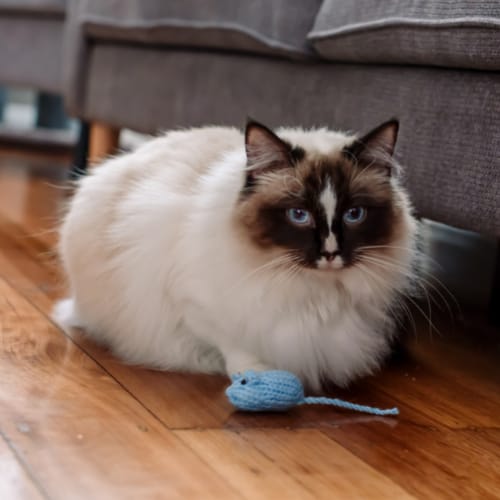
Ragdoll cats make ideal apartment pets for families or individuals looking for feline companionship. They have plush coats and affectionate personalities. Ragdolls trace their origins to California in the 1960s, when breeder Ann Baker carefully developed the breed's signature colorpoint pattern and docile temperament. Their relaxed nature and soft fur quickly attracted admirers.
In apartments, Ragdolls love to get ample lap time and gentle handling. Their long fur requires twice weekly brushing to prevent matting. Ragdolls enjoy interactive play but have lower exercise needs overall. Weight management is important, as they can become obese if overfed. Health issues to monitor include bladder stones, kidney disease, and hypertrophic cardiomyopathy.
Ragdoll cats win devotees thanks to their cuddly nature and mesmerizing blue eyes. They make especially nurturing companions for respectful children. While purchasing from ethical breeders has a cost, adopting Ragdolls from rescues also ensures a friendly pet. With proper care, training, and health monitoring, the affectionate Ragdoll will flourish into an ideal apartment companion.
Himalayan - $1,210 to $6,489
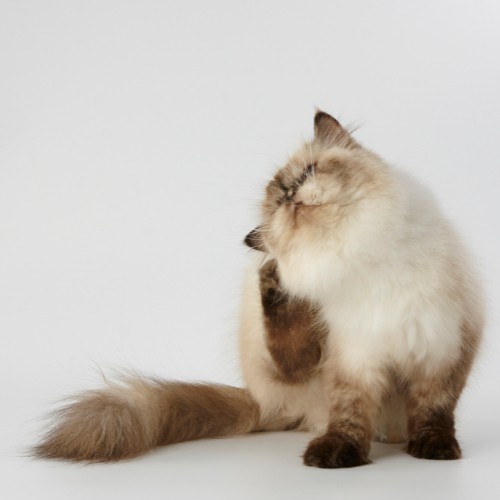
Himalayan cats encapsulate Persian beauty in a package friendlier to allergy sufferers, with striking blue eyes and long, silky coats. Crossbreeding Persians with Siamese in the mid-1900s united the best of both breeds - the calm, sweet nature of Persians and the pointed pattern of Siamese. Originally considered a distinct breed, some registries later classified Himalayans as color variations of the Persian.
Himalayans prefer calmer households where their grooming and companionship needs can be met consistently. Their long fur requires diligent daily brushing to prevent matting and hairballs. Early socialization ensures they become comfortable around other pets. Health issues to monitor include kidney disease, respiratory problems, and retinal atrophy.
For those desiring Persian temperament with slightly lower grooming needs, the Himalayan delivers beauty and companionship. With proper care and maintenance, the Himalayan's gentle devotion enhances apartments and families.
How To Choose A Cat Breed For Your Apartment?
There are certain things to keep in mind while looking for a cat companion to keep in your apartment. This way, you can both be comfortable knowing that you are enjoying your life together, even in a relatively more confined space.
Personality and Temperament
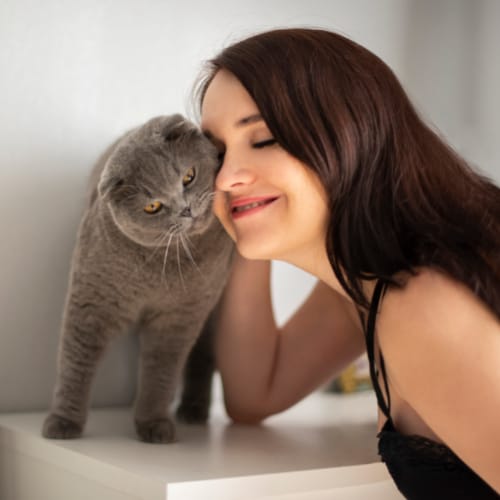
When space is limited, personality matches matter. Seek out breeds described as calm, laidback, highly adaptable, social, and affectionate. Steer clear of intensely active or overly independent breeds that become destructive or noisy when bored or understimulated. Some recommended apartment-friendly personality traits to look for:
- Content to lounge and bird-watch
- Satisfied with moderate playtime
- Bonds strongly with owner
- Avoids excessive vocalization
- Comfortable around other pets
The ragdoll, for example, is known as a relaxed and easygoing breed that thrives on human interaction. In contrast, the Bengal's energetic and headstrong temperament makes it a poor fit for apartment containment.
Noise Level
Vocal or loud cat breeds can create issues with neighbors in tight apartment quarters. While all cats may engage in some meowing or conversing, look for breeds described as being on the quieter side to avoid disturbances.
For example, avoid notoriously talkative breeds like the Siamese or Oriental Shorthair. In contrast, British Shorthairs and Norwegian Forest Cats rank among the most muted and adaptable indoor cats.
Energy Level
Cats are stuck inside more often in apartments without yards to roam. Thus, a low to moderate-activity breed suits this slower pace of life. High-energy breeds left without sufficient outlets often vent their boredom by getting into everything and anything. This leads to undesirable scratching, scaling drapes, swatting items off shelves, etc. Stick to the couch potato breeds with only short bursts of playfulness now and then.
Grooming Needs
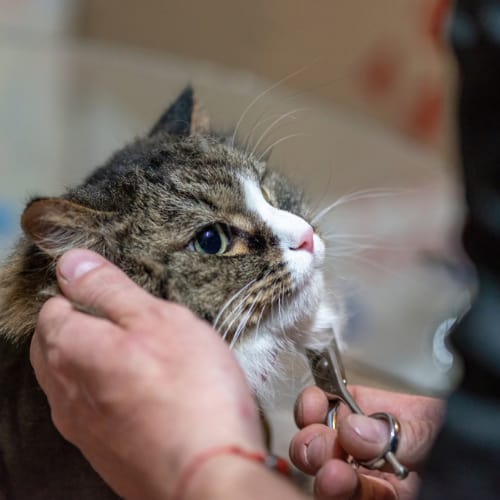
Long-haired cat breeds require much more frequent brushing and grooming to control tangles and mats. Excess shedding also becomes more of a chore to constantly clean. For lower maintenance cat care, steer towards short or medium-length coats that need only weekly brushing at most. The fur lengths of the Tonkinese or Burmese, for example, tend to align well with a relaxed apartment grooming routine.
Shedding Level
Heavy shedding can create extra mess within confined apartments that are harder to escape. Sphynx cats eliminate this issue entirely with their total hairlessness! For other low-shed breeds, consider the Bengal, Cornish Rex, or Devon Rex. Their short, fine coats release less dander and hair. If your style prefers fluffier fur, look for breeds that are seasonal shedders that "blow" their coat just a couple of times per year. The Norwegian Forest Cat and Maine Coon shed moderately outside of seasonal coat changes.
Size
Larger cat breeds often yearn for more room to roam and play than an apartment can provide. Out of fairness to the breed, opt for small to medium-sized cats that weigh no more than 12 pounds full grown.
Some apartment-friendly breeds meeting size requirements include the Singapura, Burmese, Havana Brown, and Munchkin. Monitor kitten growth rates if adopting a mixed breed to ensure maximum size aligns with apartment living.
Litter Box Habits
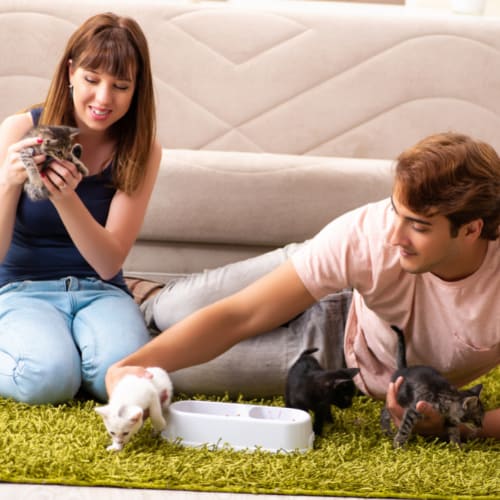
For peaceful coexistence in close quarters, proper and consistent litter box use is non-negotiable. Some medical conditions predispose certain breeds to accidents, spraying, or marking inside the home more frequently.
Where possible, avoid these breeds more prone to litter box issues. All cats may have an occasional miss, but extreme resistance to training or habitual bathroom incidents should disqualify adoption. Investing in a good cat litter can also help minimize undesirable bathroom behaviors.
Training Ease
Intelligence and eagerness to please make a cat much simpler to train for apartment coexistence. Key behaviors for apartment cats include scratching only approved surfaces, leaving houseplants alone, and proper litter usage.
Seek out breeds that usually desire to understand what earns their owner's praise. For example, the playful Abyssinian and fearless Siamese rank among the most trainable cat breeds. Alternatively, challenging breeds to house train include the timid Persian or willful Bengal.
Final Thoughts
While most cats can thrive in apartments, some active breeds may need more space to properly exercise. Nonetheless, any cat breed can make an excellent companion for apartment living if their unique needs are met. Proper research into specific breeds helps ensure your cat's health and happiness.
As the content shows, there is no definitive list of "bad apartment cats." However, less active breeds like the Ragdoll and Persian may adapt easier than energetic breeds like the Abyssinian. The key is understanding your cat's exercise requirements and providing adequate outlets. With proper care and attention, those athletic breeds can flourish as well.
We welcome your thoughts below on choosing the right cat for your home. Please share your experiences and advice to help others make the best decision.
Thanks for reading!

